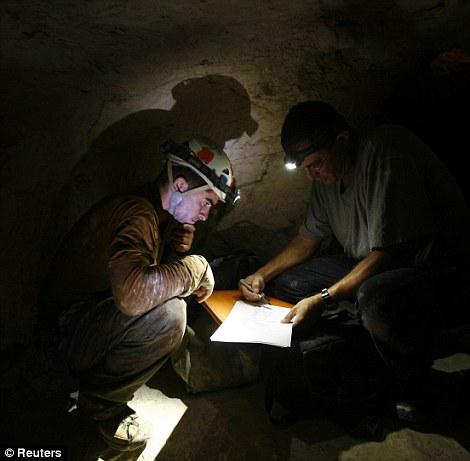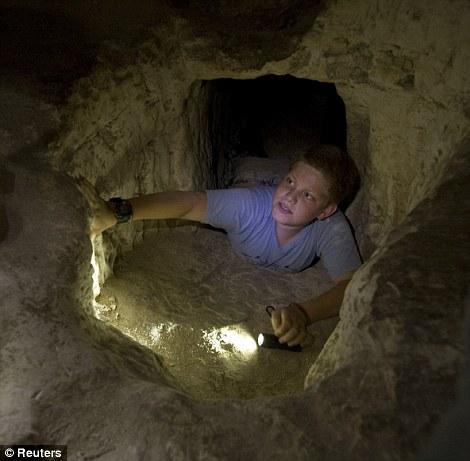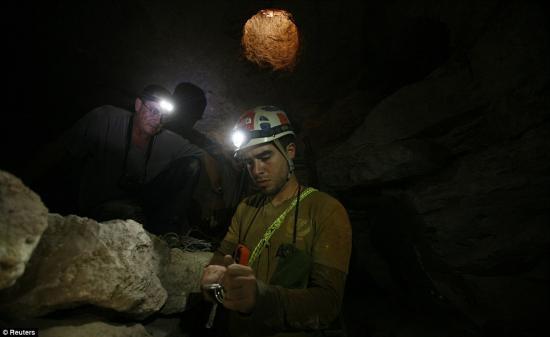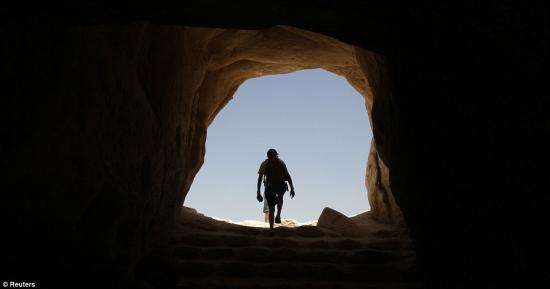
PART.2
The tunnels which a haunting insight into how the Jewish rebels lived and fought during two revolts against the Romans - the first around the time the great temple was destroyed in Jerusalem in 70 AD, and one decades later under leader Bar Kochba.
'Crawling inside a hiding complex is a thrill. We always expect the unexpected,' said Amos Frumkin, a professor at the Geography Department at the Hebrew University of Jerusalem who heads the school's Cave Research Unit.
For decades he and his team have explored and mapped newly discovered systems, passing many days each year underground. They have found ancient weapons, trap doors and olive presses during their surveys. Their findings are published in an obscure journal called Niqrot Zurim, or Caverns in the Rocks.
The foothills of Jerusalem around the ancient city of Beit Guvrin are like an ant farm and best tell the story of the guerilla tactics used in the Bar Kochba rebellion. The rebel strategy worked for a while, but the Romans eventually defeated them.
Earlier caves have been found farther north in the Galilee, where team members were called to explore a tunnel system found just a few months ago.
Archaeologists had uncovered what they thought was a standard, eight-metre-deep water cistern, but later noticed it had narrow crawl spaces shooting off its base.
The team pushed on to the lower level, the first people in 2,000 years to tread there. With a metal detector and laser measurer they spent hours mapping just a fraction of the tunnels.
Researchers have also mapped many of the nearby cavern hideouts that dot the cliff side of Mount Arbel overlooking the Sea of Galilee. Roman historian Josephus described in his writings how King Herod lowered his men in chests from the cliff to the cave openings and, using fire, overtook the rebels.
It is easy to get lost in the underground mazes and only a handful are well-marked and maintained.
'These tunnels are an amazing secret that tourists unfortunately don't know about,' said veteran guide Asael Lavi. 'It's possible to spend an entire day or two crawling in the different systems and experience the fear, grief and even excitement that the rebels must have felt.'


Highlights: Researchers have recovered weapons, trap doors and olive presses during their explorations and gained fascinating insight into the lives of the rebels

Stepping back into history: Researchers Boaz Langford (right) and Boaz Zissu have been carefully mapping the caverns

Daylight: The caverns were once illuminated by oil lamps but visitors now use head torches to find their way through the maze